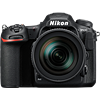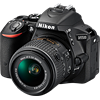Main
Model
Price
Advantages
launch
Announced
Body type
Camera subcategory
Sensor
Effective pixels
Max resolution
Sensor size
Sensor type
Processor
Image ratio w:h
Other resolutions
Sensor photo detectors
Image
ISO
Boosted ISO (minimum)
Boosted ISO (maximum)
White balance presets
Custom white balance
Image stabilization
Uncompressed format
JPEG quality levels
Photography features
Minimum shutter speed
Maximum shutter speed
Aperture priority
Shutter priority
Manual exposure mode
Subject / scene modes
Built-in flash
External flash
Flash modes
Continuous drive
Self-timer
Metering modes
Exposure compensation
AE Bracketing
WB Bracketing
Flash range
Screen / viewfinder
Articulated LCD
Screen size
Screen dots
Touch screen
Screen type
Live view
Viewfinder type
Viewfinder coverage
Viewfinder magnification
Videography features
Resolutions
File Format
Microphone
Speaker
Optics & Focus
Autofocus
Digital zoom
Manual focus
Number of focus points
Lens mount
Focal length multiplier
Physical
Weight (inc. batteries)
Dimensions
Environmentally sealed
Battery
Battery details
Battery Life (CIPA)
Storage
Storage types
Storage included
Connectivity
USB
HDMI
Microphone port
Headphone port
Wireless
Wireless notes
Remote control
Other features
Orientation sensor
Timelapse recording
GPS
GPS notes
Samples
Videos
Summary
The Nikon D5500 maximum resolution of 6000 x 4000 pixels (24 megapixels) is better in comparison with the D500 highest resolution of 5568 x 3712 pixels (21 megapixels). The D500 is equipped with larger sensor than the Nikon D5500: APS-C (23.5 x 15.7 mm) versus APS-C (23.5 x 15.6 mm). It is very important difference between these models because big sensor allows the photographer to produce pictures of the higher quality. The D500 offers a wider ISO range of 100-51200 than 100-25600 ISO range of the Nikon D5500. This ISO range let you to produce better pictures in low light situations. The D500 has more number of focus points than the Nikon D5500: 153 vs 39. More number of focus points means more convenience while attempting to focus on subjects that are not centred.
The D5500 is equipped with swiveling LCD that will let the photographer to shoot high quality selfies. The D500 screen is better as it offers more number of screen dots 2,359,000 in compare to 1,037,000 dots of the Nikon D5500 screen. The higher dot count screen is better for reviewing images on your camera. The D500 provides better highest shutter speed - 1/8000 second.
The Nikon D5500 is produced with built-in flash. The D500 is environmentally sealed i.e. the camera will be safe even uncovered if the photographer is out shooting in the rain and snow. The D500 battery life is better than the Nikon D5500 battery life. According to CIPA standards you will be able to take 1240 shots with the D500 and only 820 with the D5500. The D5500 weighs 420g which is 440g lighter in comparison with the weight of the D500. The D500 can utilize optional accessory GPS devices. Recording GPS data can be useful if you like to travel, to be able to check the image metadata and see exactly where a picture was shot.
The Nikon D500 has 10 advantages and the Nikon D5500 only 7 so the D500 will become the best buy. Check the list of the best offers on Amazon.


